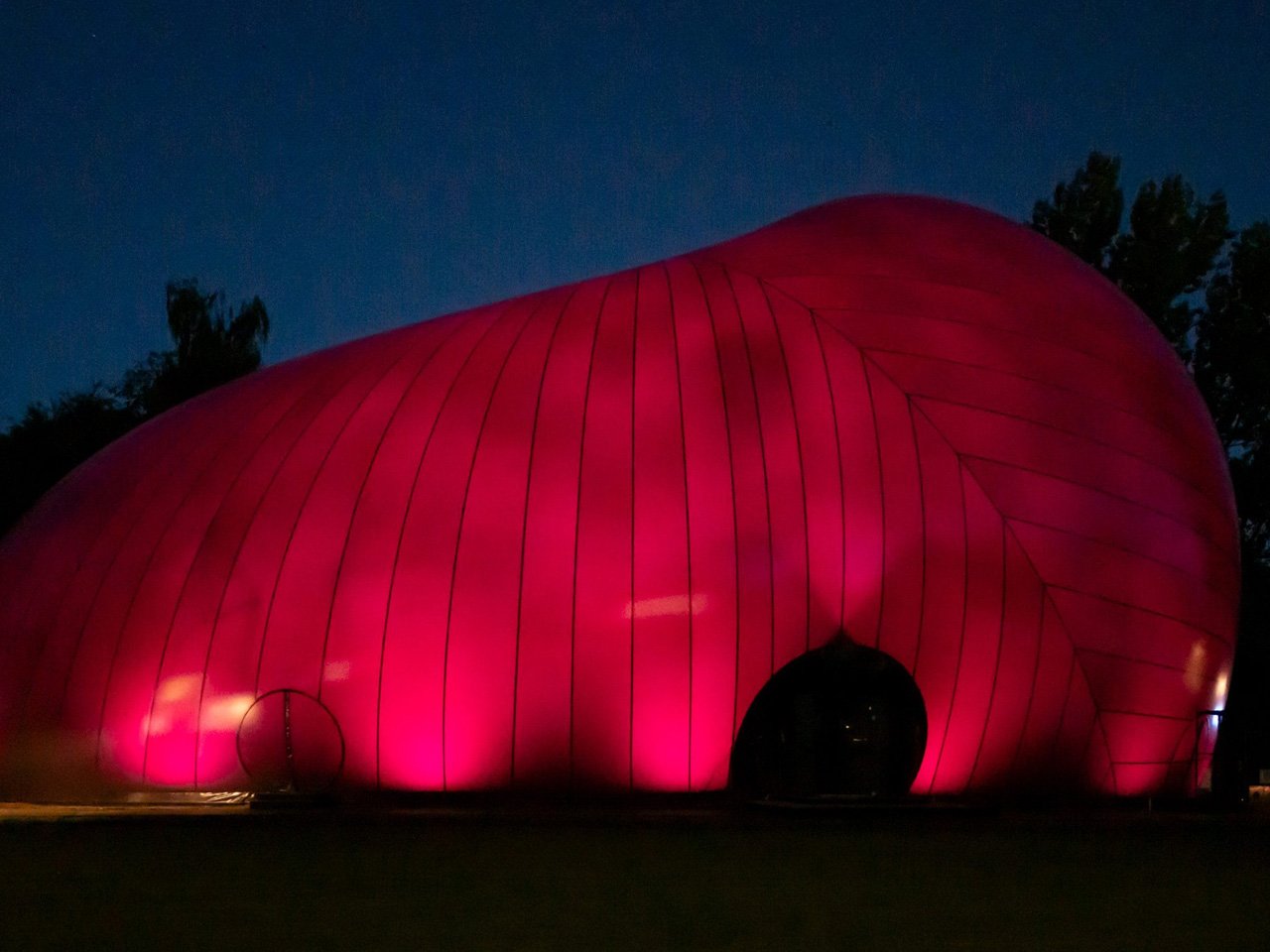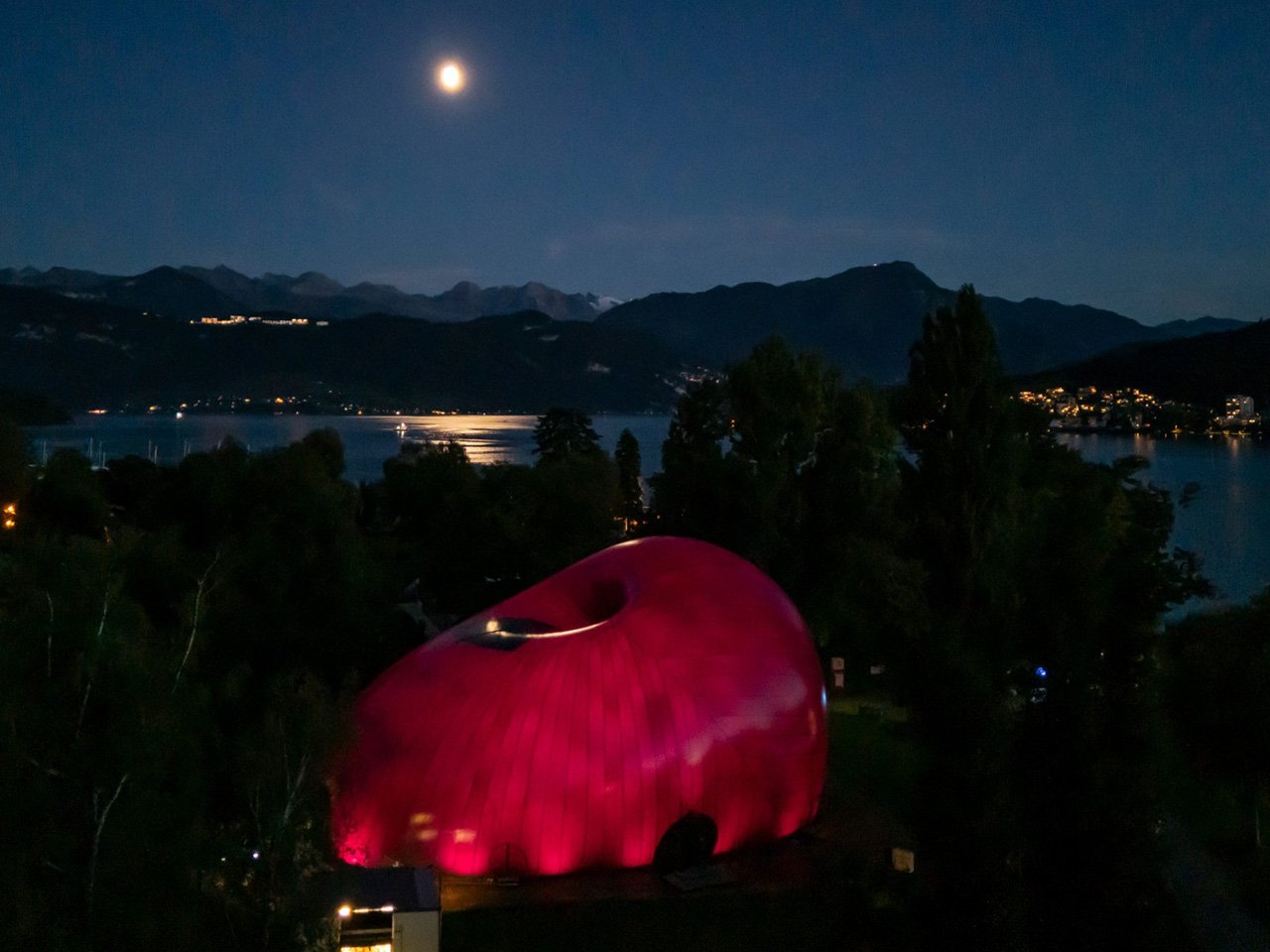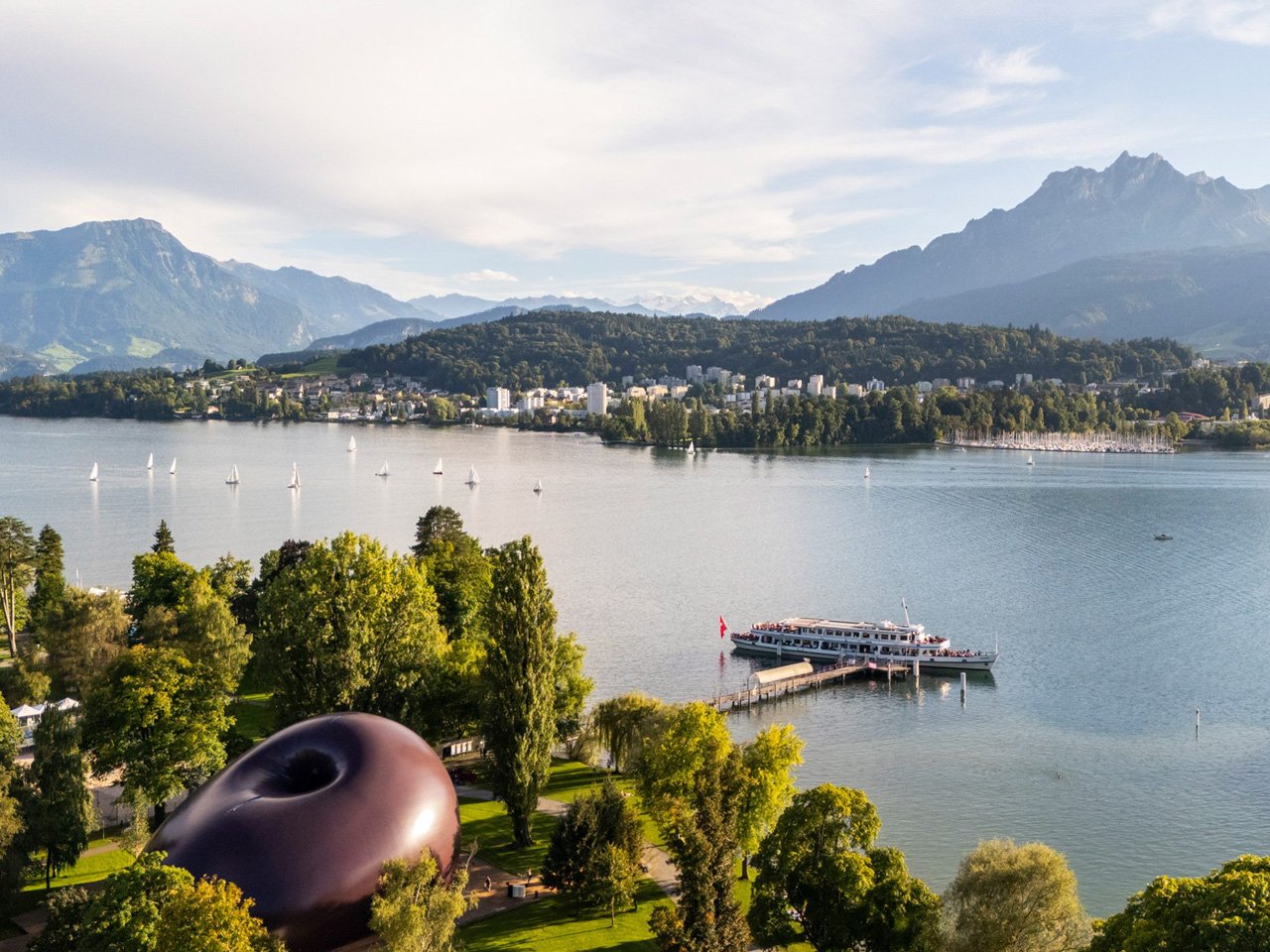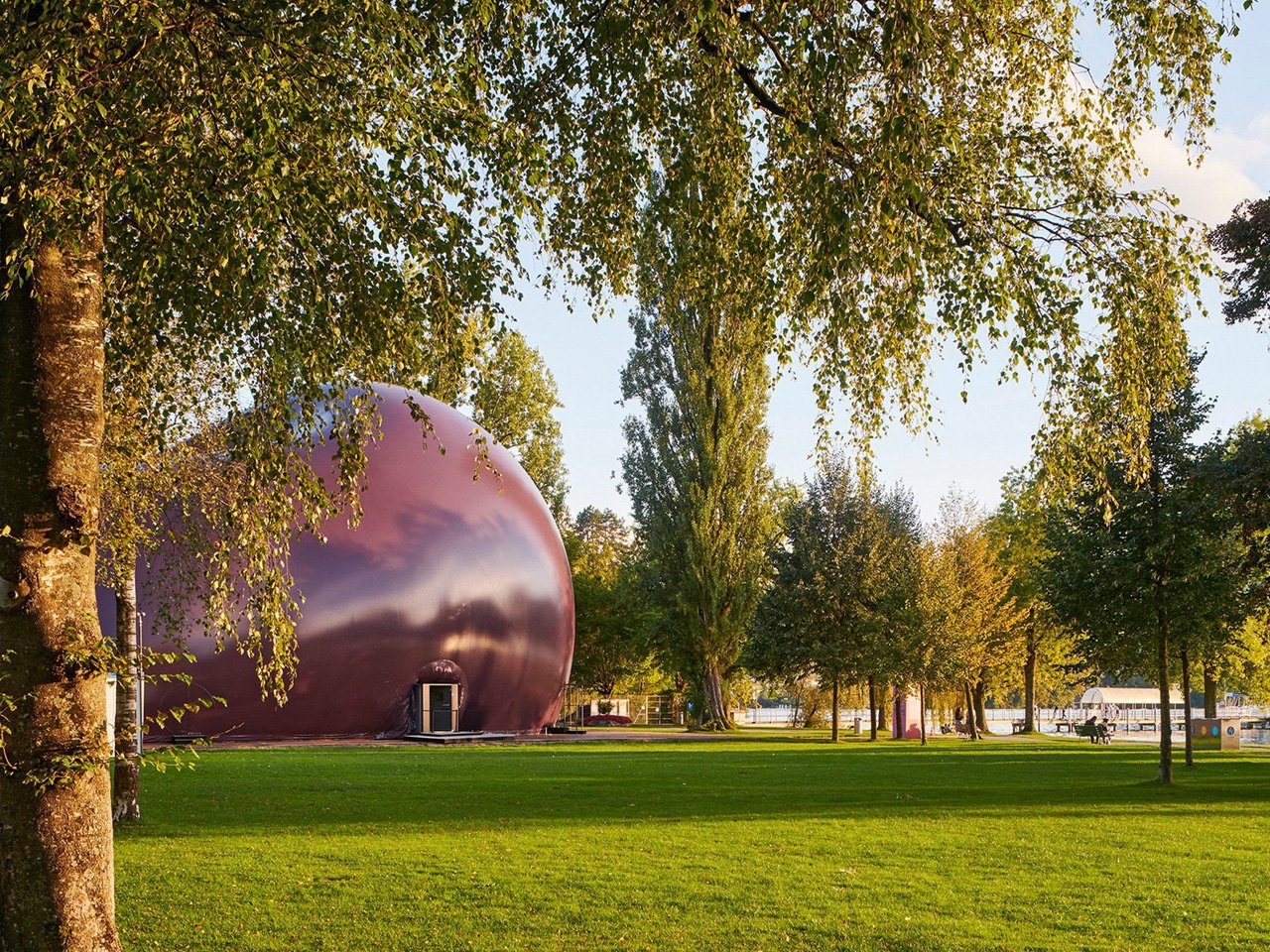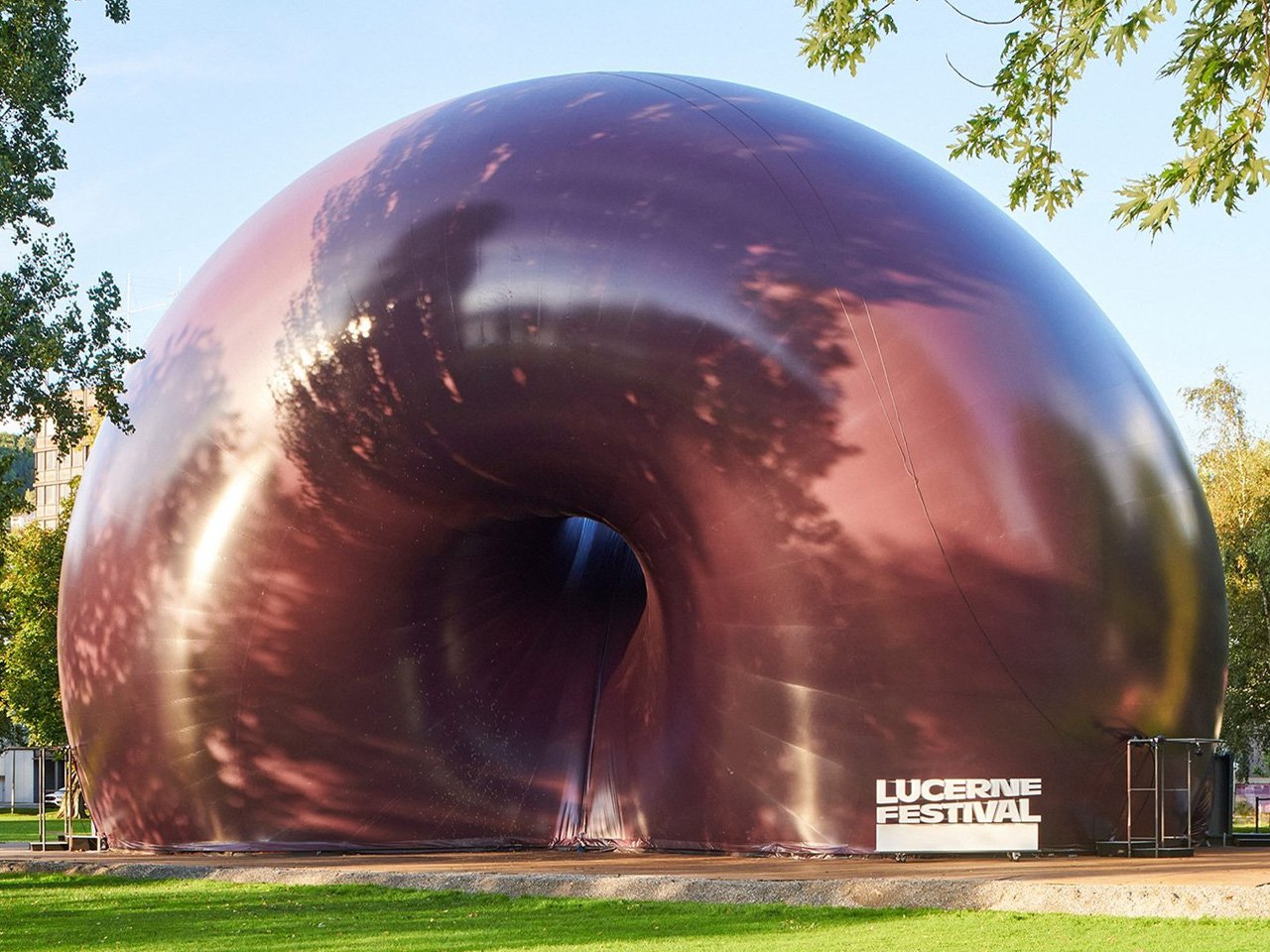
In a world where concert venues are typically synonymous with marble columns and gilded balconies, Ark Nova stands as a radical reimagining of what musical spaces can be. This extraordinary inflatable concert hall, born from a collaboration between British sculptor Sir Anish Kapoor and late Japanese architect Arata Isozaki, recently made its European debut at Switzerland’s prestigious Lucerne Festival, marking a pivotal moment in its remarkable journey. From a distance, Ark Nova resembles a giant purple donut or bean, depending on your vantage point, challenging conventional notions of what concert venues should be.
Ark Nova’s story begins not with artistic ambition, but with human resilience. Created in 2013 as a direct response to the devastating Fukushima earthquake and tsunami of 2011, this mobile concert hall emerged as Switzerland’s Lucerne Festival sought to bring cultural programming to Japan’s devastated northeastern regions. The project’s name, evoking Noah’s Ark, wasn’t chosen by accident—it represents hope, renewal, and the power of art to heal communities in crisis. The structure made its world debut in Matsushima, Japan, opening with a concert on September 27, 2013, and for over a decade, it toured tsunami-affected areas, providing what organizers called “cultural events as an agent for new beginnings.”
Designer: Anish Kapoor & Arata Isozaki
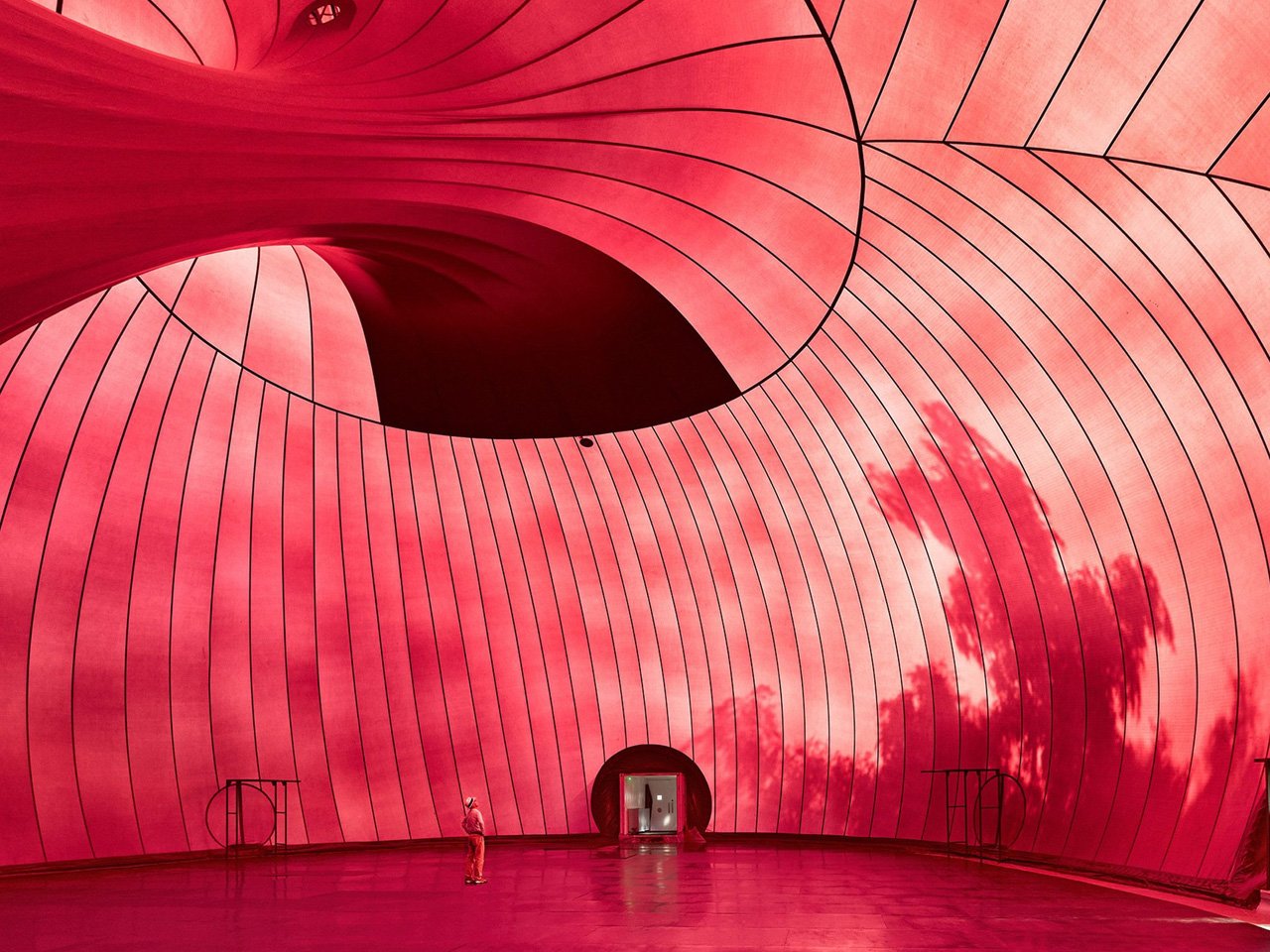
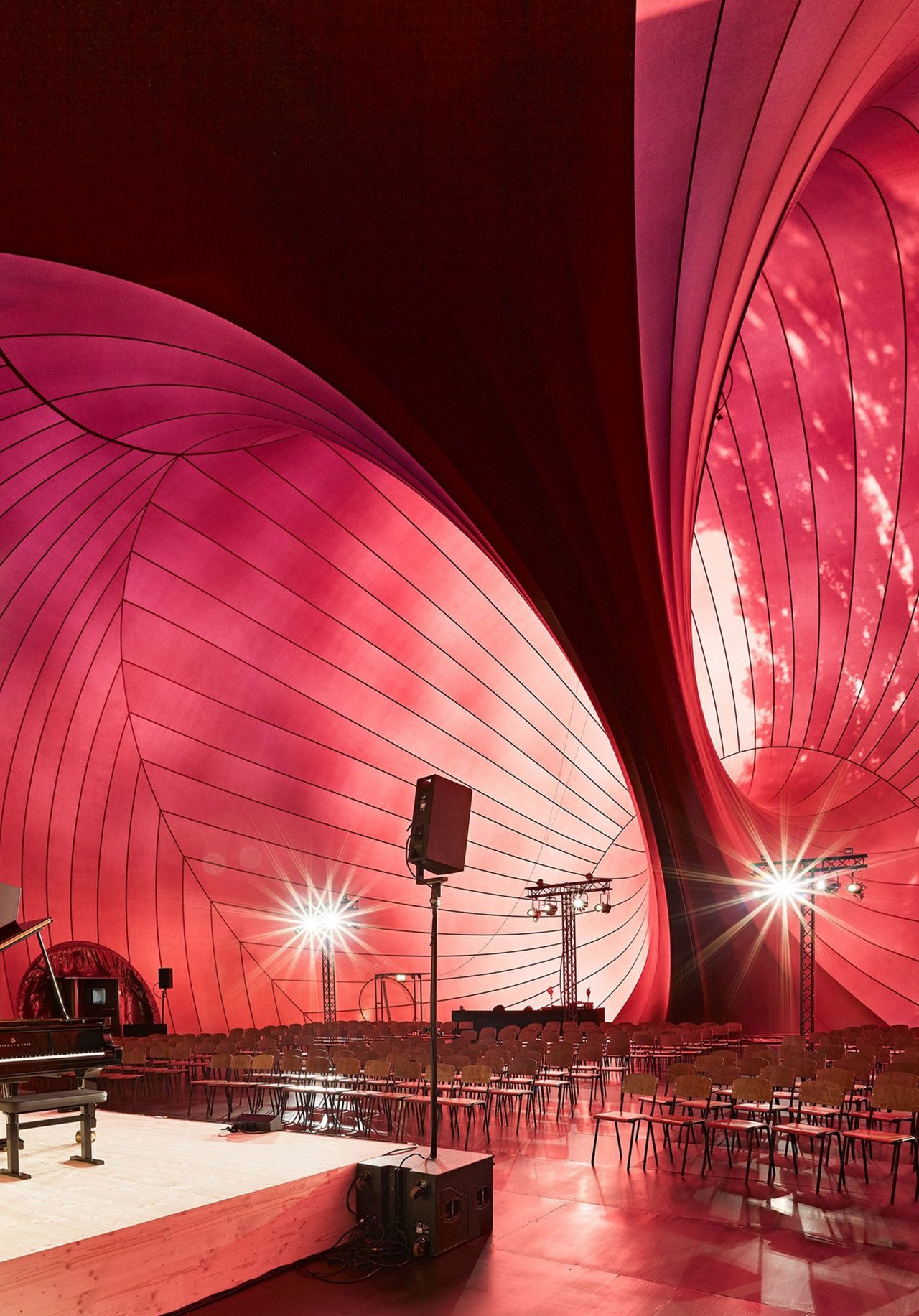
The distinctive purple shape isn’t merely aesthetic—it’s the result of sophisticated engineering that transforms a simple inflatable membrane into a fully functional concert venue. The structure requires no supporting framework, relying instead on its pneumatic form to provide structural integrity and acoustic properties. This inflatable PVC textile surface needs no complementary metallic structures because its own shape guarantees rigidity and self-bearing properties. Technical innovation came through collaboration with specialized engineering consultancy Tensys, which worked closely with Kapoor to realize his sculptural vision while meeting the practical demands of a touring concert hall.
The installation process is surprisingly swift: using two cranes, the entire structure can be erected and inflated in approximately one hour. Originally designed to accommodate 500 visitors, the venue was scaled to 300 for its Swiss residency to optimize acoustics for the intimate festival setting. The engineering had to reach the level of sculptures Anish Kapoor is world-renowned for while creating a structure that can withstand various weather conditions and maintain touring capabilities across different locations and climates.
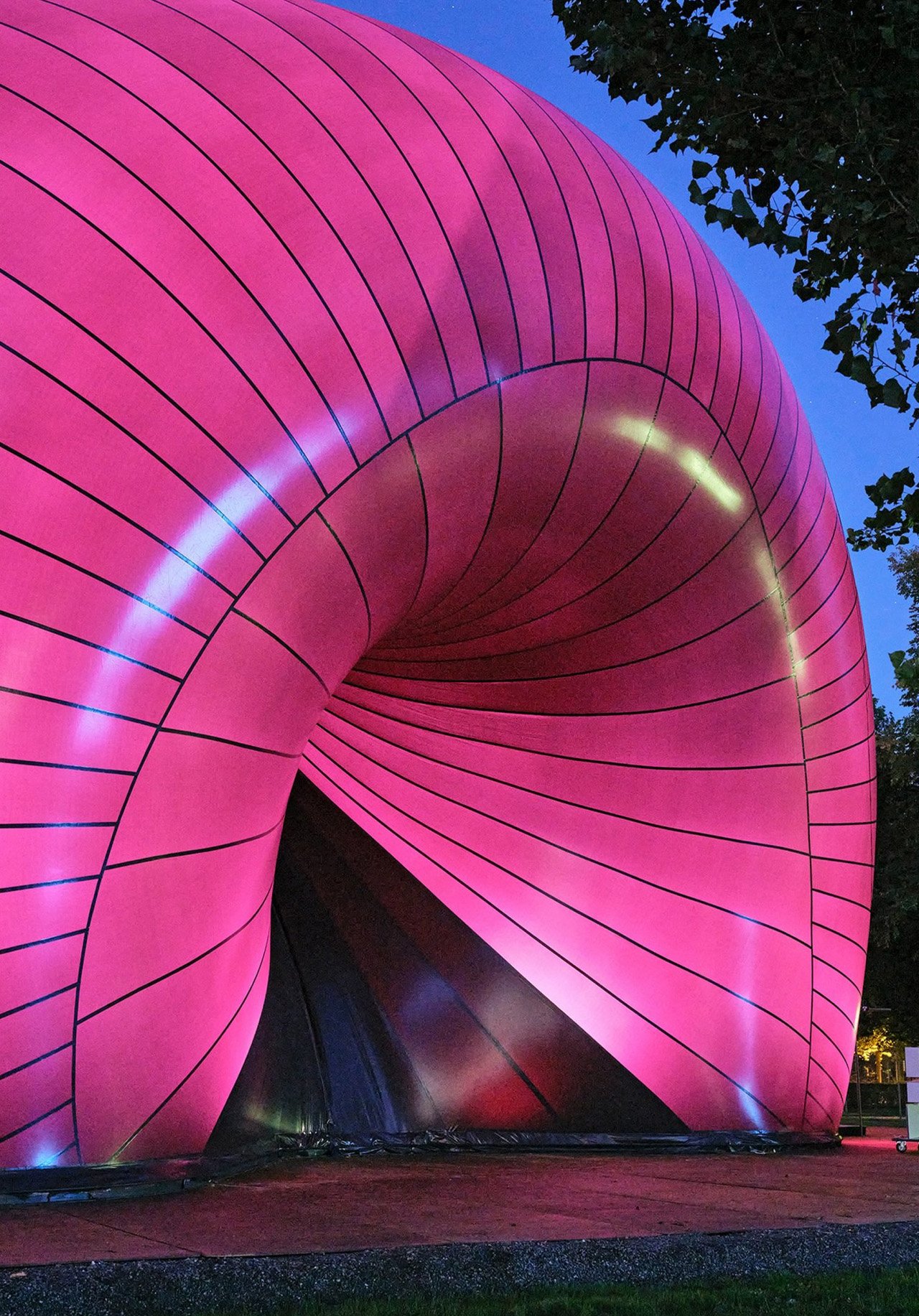
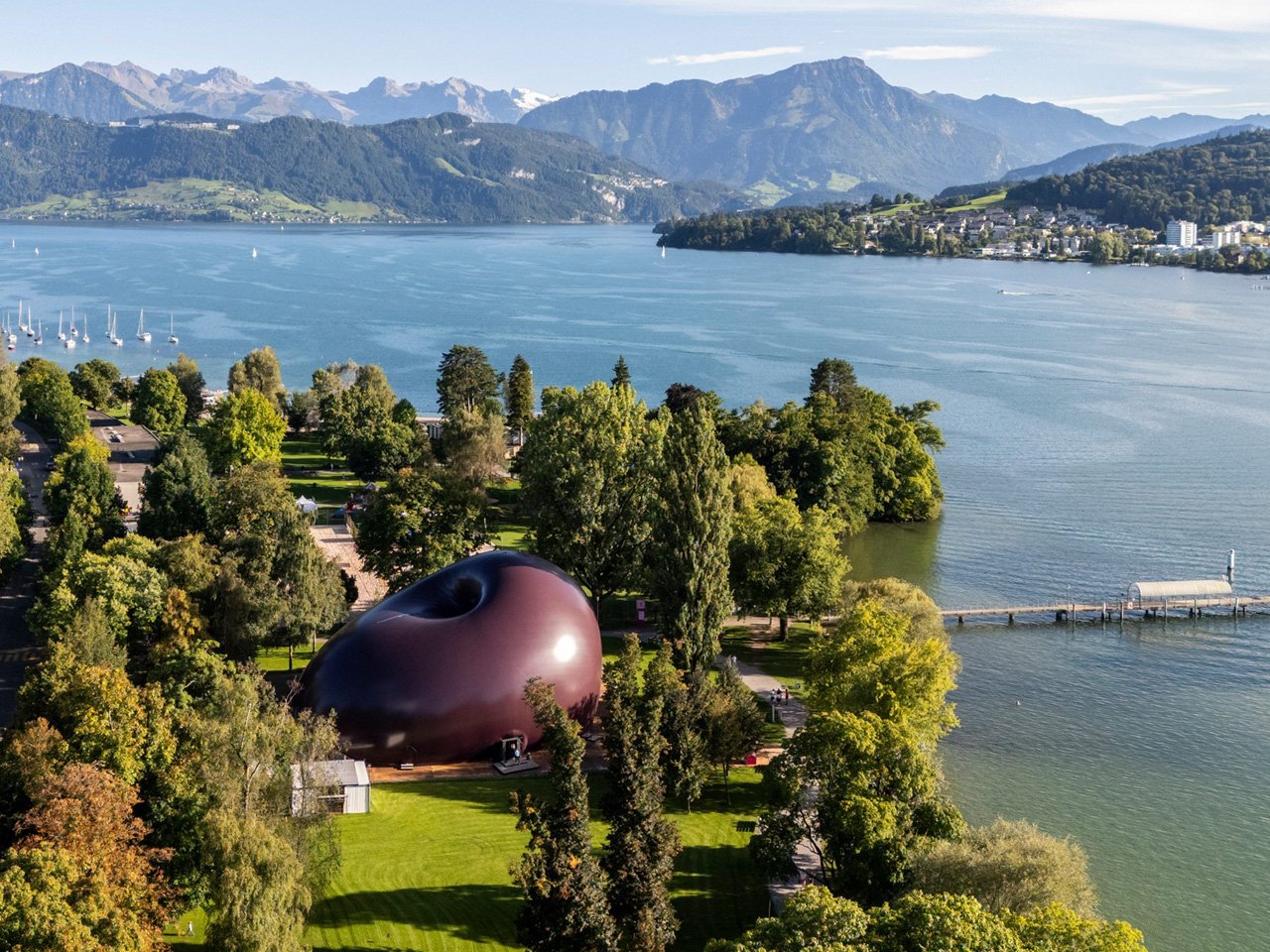
After spending over a decade exclusively in Japan, Ark Nova’s 2025 European debut at the Lucerne Festival represented a significant milestone. The eleven-day program showcased the venue’s versatility, hosting performances ranging from classical chamber music to jazz and folk, demonstrating how the unique architectural environment enhances different musical genres. Beyond its function as a performance space, the Lucerne Festival offered guided tours, allowing visitors to experience Ark Nova as a work of art in its own right. During daylight hours, natural light filtering through the membrane creates an ethereal atmosphere that transforms throughout the day.
Ark Nova proves that exceptional cultural experiences don’t require permanent, monumental architecture. Instead, it offers something perhaps more valuable: accessibility, mobility, and the ability to bring world-class performances to communities that might otherwise never experience them. As this inflatable marvel continues its journey, it carries forward Isozaki’s architectural legacy and Kapoor’s sculptural vision, demonstrating that sometimes the most profound artistic statements come wrapped in the most unexpected forms. The structure serves as a democratic gesture, a hall without marble pillars or gilded balconies, yet its impact remains just as powerful in creating meaningful community experiences wherever it travels.
